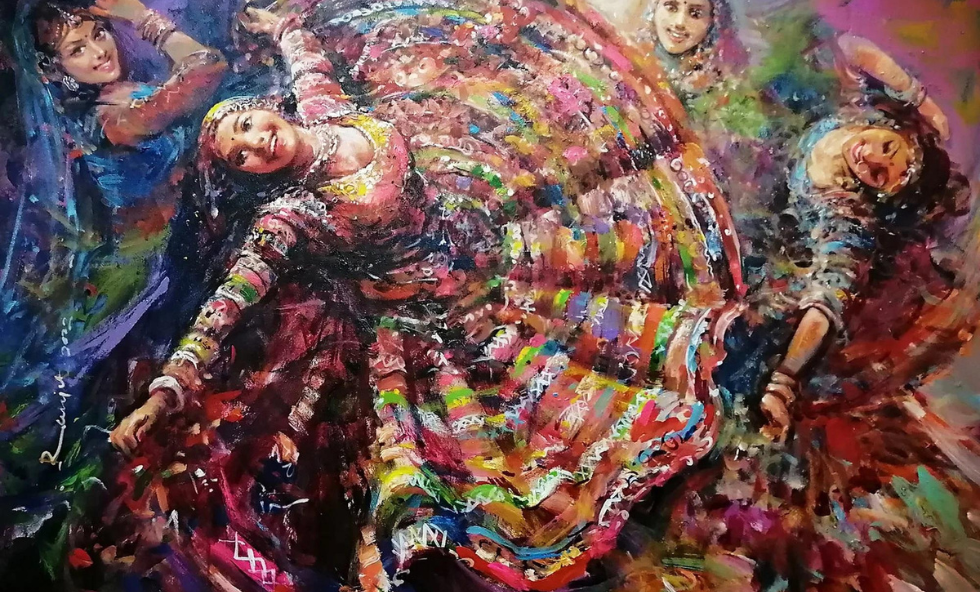For those who love the magic of dance, those who dream of performing in colorful attire, and those who admire the cultural history of Rajasthan, the Ghoomar dance is a fascinating masterpiece. Picture yourself among the desert landscapes and grand palaces of Rajasthan, where a vibrant spectacle unfolds – the Ghoomar dance. This graceful tradition takes you on a journey through time, encapsulating the essence of Rajasthani culture in its every twirl and step. Whether you’re a passionate dancer, a lover of rhythmic expressions, or simply someone enchanted by the rich heritage of India, Ghoomar promises to be a mesmerizing journey into a world of tradition, grace, and elegance.
Table of Contents
ToggleWhat is Ghoomar Famous For?
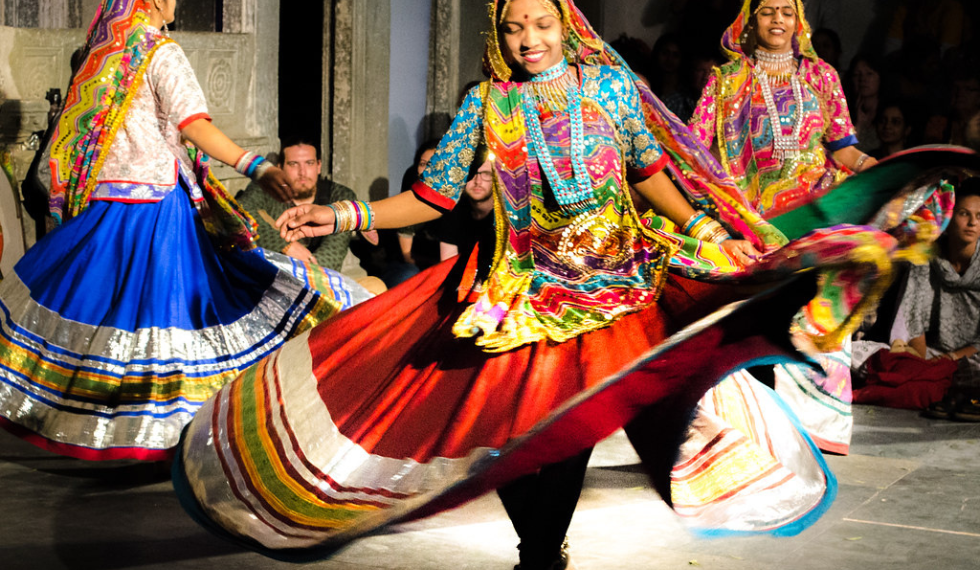
Ghoomar is famous for being a captivating traditional dance form from the historically rich state of Rajasthan, India. Ghoomar’s roots can be traced back to the Marwar region of Rajasthan. This traditional dance form has a deep historical significance, and its origins date back to the royal courts of Rajasthan. It was originally performed by women during special occasions, celebrations, and to entertain the Rajput royalty.
It is renowned for its graceful and fluid movements that create a breathtaking appearance, often performed in a circular motion. Ghoomar has gained international recognition for its vivid and colorful attire, elaborate veils, and the pure elegance it reflects in its performance. Over the centuries, Ghoomar has evolved, but it has retained its essence as a cultural gem and a reflection of Rajasthani traditions.
Rajasthan’s Landscapes and Cultural Significance:
Rajasthan, often referred to as the “Land of Kings,” is known for its vast deserts, grand palaces, and a rich history of culture and traditions. The dance reflects the very soul of Rajasthan, with its spirited movements echoing the spirit of the land and its people. The dance serves as a cultural emblem, preserving the essence of Rajasthani heritage through artistic expression.
Ghoomar dancers also attired in vibrant and eye-catching attire. They wear long, wavy skirts often in rich colors, such as deep reds, vibrant blues, and bright yellows and many more. What truly adds to the attraction of Ghoomar are the veils. Dancers are wearing veils that are not only elegant but also serve as a means to create an air of mystery and grace. These veils are used skillfully during the performance, sometimes to cover their faces or to enhance the dance’s graceful movements.
Ghoomar dance plays a pivotal role in upholding and preserving the rich tapestry of Rajasthani traditions. As one of the most iconic and beloved dance forms in Rajasthan, it serves as a cultural torchbearer. Each swaying movement, each twirl, and each graceful step is a living testament to the customs and values deeply rooted in the Rajasthani way of life. Ghoomar is not just a dance; it’s a medium through which traditions, values, and the collective memory of a people are conveyed. For traditional dance lovers, this is an opportunity to immerse yourself in a tradition that has endured for generations, a dance that has held fast to its roots even as it evolves with the times.
Ghoomar is a visual and artistic representation of Rajasthan’s history, culture, and way of life. Through intricate hand gestures, dynamic footwork, and elegant spins, Ghoomar tells stories of Rajasthan’s valor, love, and daily existence. It reflects the pride and resilience of a people who have thrived in a challenging desert environment. The cultural and historical aspects embedded in Ghoomar can be seen in the way dancers carry themselves, the choice of music and songs, and the very rhythm of the dance. For traditional dance enthusiasts, Ghoomar becomes a window to a world where every move is a brushstroke on the canvas of Rajasthan’s vibrant culture.
Discuss the Importance of Tradition in Dance
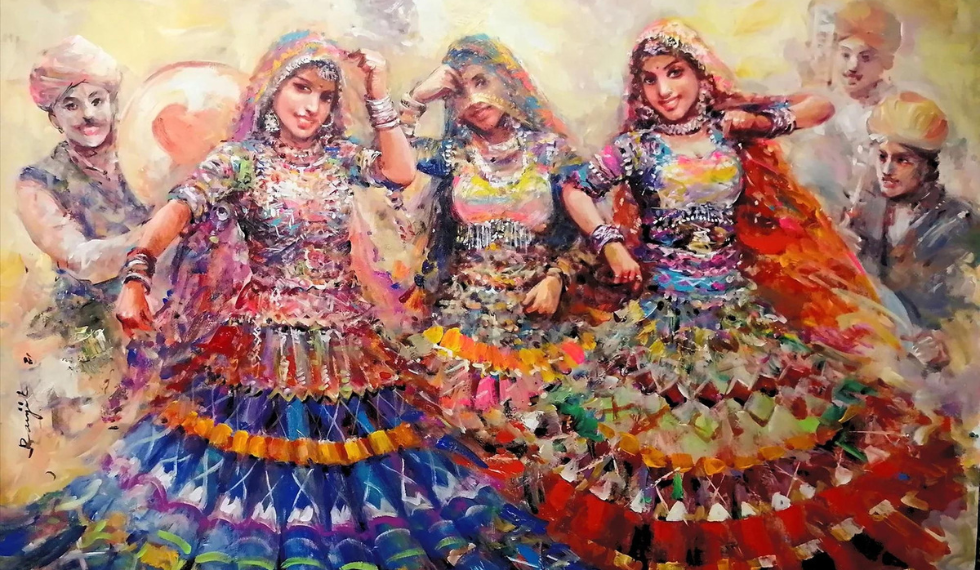
Tradition is the backbone of dance. It’s the cultural DNA that shapes the way a dance form evolves and survives. In the case of Ghoomar, tradition is not just an aspect; it’s the very essence. It reminds us that dance is not just about movement but also about preserving a unique identity. It’s a testament to how traditions provide a sense of belonging and continuity.
Traditional dance lovers, as you delve into the world of Ghoomar, you’ll find not just mesmerizing movements but a living museum of tradition, culture, and history. Every gesture, every step, and every note of the music sings a song of Rajasthan. Ghoomar’s significance lies not only in its elegance but in its ability to keep the heart of a culture beating and the spirit of tradition dancing in harmony with the present.
Ghoomar dance holds a special place in the realm of traditional dance, offering a multitude of significance and allure for traditional dance lovers. Let’s explore the captivating importance of Ghoomar in the world of traditional dance.
Preservation of Cultural Heritage: Ghoomar is not just a dance but a living archive of Rajasthan’s cultural heritage. It encapsulates centuries-old traditions, customs, and values, presenting them in a mesmerizing and tangible form. Traditional dance lovers have the privilege of experiencing the very essence of Rajasthan’s rich cultural tapestry through the intricate movements and graceful expressions of Ghoomar.
Rajasthani Identity: Ghoomar is an embodiment of the Rajasthani identity. It’s a dance that reflects the soul of the “Land of Kings.” For those who admire traditional dance, Ghoomar offers an intimate glimpse into the heart of Rajasthan, capturing its vibrant spirit and timeless traditions. Every twirl and every gesture tells a story deeply rooted in the history and identity of the region.
Cultural Celebration: Traditional dance enthusiasts find in Ghoomar a cultural celebration in motion. It’s not just a performance; it’s a vivid portrayal of Rajasthan’s festivities, celebrations, and grandeur. The lively rhythms and lively melodies paint a picture of the state’s vivacious spirit, providing a unique way to celebrate and appreciate Rajasthani culture.
Artistic Expression: For lovers of traditional dance, Ghoomar is a prime example of how dance can transcend entertainment to become a powerful form of artistic expression. The choreography, the intricate hand movements, and the seamless footwork showcase the beauty that can be found in age-old artistry. Ghoomar allows traditional dance lovers to witness the captivating fusion of tradition and creativity.
Connection to the Past: Ghoomar bridges the gap between the past and the present, creating a profound connection to history. As you watch the performance, you’re transported to an era when this dance was an integral part of royal festivities and cultural expression. For traditional dance aficionados, Ghoomar is a gateway to the past, a chance to immerse themselves in the timeless beauty of Rajasthan.
Ghoomar: A Timeless Journey through Rajasthan’s Tradition, Grace, and Elegance
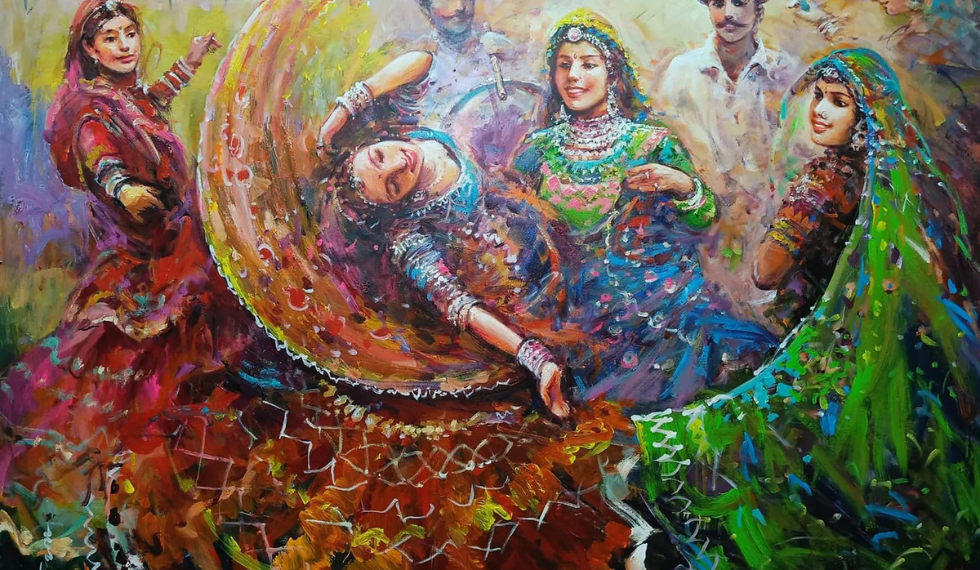
Ghoomar plays a vital role in upholding and preserving the rich tapestry of Rajasthani traditions. As you delve into the heart of Ghoomar, you’ll discover that this dance isn’t just a mere performance; it’s a living embodiment of the traditions and cultural values of Rajasthan. With every twirl and graceful gesture, Ghoomar tells stories of a bygone era, echoing the grandeur of the royal courts and the vibrant life of the desert state. The dance is a repository of customs and values, reflecting the enduring spirit of Rajasthan’s cultural heritage.
Cultural and historical aspects come alive in the intricate movements and gestures of Ghoomar. Each step, each spin, and each hand movement convey tales of love, devotion, and celebration. The dance’s history is etched in the rhythms and melodies, transporting you to a time when it was an integral part of royal festivities. For traditional dance lovers, Ghoomar becomes a captivating journey through the annals of history, a visual and rhythmic narrative of the past.
In the realm of traditional dance, tradition itself holds immense significance. It serves as a connection to our roots, a means of passing down age-old wisdom and stories, and a way to celebrate the essence of a culture. Ghoomar, with its deep-rooted traditions, reiterates the importance of preserving cultural heritage through the timeless art of dance.
Grace in Every Movement
Ghoomar’s beauty lies in the grace that permeates every movement. The dance is like poetry in motion, where each step and sway symbolizes grace personified. Its fluidity is reminiscent of a river’s gentle flow, with dancers moving seamlessly in perfect harmony. This grace is not just a mere physical aspect but a spiritual and cultural one too.
The choreography of Ghoomar is a masterpiece in itself. Every element is meticulously crafted, from the intricate hand gestures that convey emotions and stories to the precise footwork that adds a rhythmic dimension to the performance. It’s a dance form where elegance meets precision, where each movement is a brushstroke on the canvas of tradition. The connection between Ghoomar and grace is undeniable; it’s an art form that encapsulates the very essence of grace and beauty.
The Elegance of Ghoomar
Elegance is the hallmark of Ghoomar performances. As you watch the dancers swirl in their resplendent skirts and veils, you’ll be captivated by the sheer elegance that radiates from every twirl. The use of veils, in particular, adds an air of mystery and intrigue to the performance, elevating the dance to a new level of sophistication. It’s not just a visual spectacle; it’s a celebration of elegance, refinement, and artistic expression.
The veils, skirts, and jewelry worn by Ghoomar dancers are not mere ornaments; they are an integral part of the performance. They are carefully chosen to enhance the overall elegance of the dance. The intricate details in the attire and jewelry mirror the intricate details of the dance itself. Ghoomar beautifully captures the spirit of elegance deeply ingrained in Rajasthani culture, making it a treat for the eyes and a testament to the grandeur of the land.
For traditional dance lovers, Ghoomar represents the epitome of elegance in the world of traditional dance. It’s a dance form that transcends the physical and enters the realm of artistic refinement, offering a mesmerizing fusion of cultural depth and visual splendor.
Ghoomar Dance Preserving Rajasthani Heritage Through Dance
Ghoomar isn’t just a dance; it’s a veritable treasure chest of culture and heritage. For traditional dance lovers, exploring Ghoomar is akin to unearthing a wealth of history and tradition, beautifully preserved through artistic expression.
This traditional dance is deeply ingrained in the cultural fabric of Rajasthan. It serves as a repository of customs, values, and the very essence of the region’s identity. Ghoomar’s significance lies in its ability to transport audiences into the heart of Rajasthan’s rich cultural tapestry. Each twirl of a Ghoomar dancer weaves a story, each graceful hand gesture echoes the sentiments of a people, and each movement is a testament to the endurance of traditions.
Ghoomar plays a pivotal role in preserving Rajasthani heritage. As the world evolves, and modernity sweeps in, this dance form stands as a guardian of the past. It acts as a living museum of traditions, ensuring that the cultural treasures of Rajasthan remain alive and thriving. The rhythms and melodies of Ghoomar are like echoes from the past, connecting us with generations gone by, reminding us of where we come from, and shaping where we are headed.
But Ghoomar isn’t just a relic of the past; it’s a cultural treasure that transcends time. It’s not just an art form for entertainment; it’s a living, breathing embodiment of Rajasthani culture. The dance’s power lies in its ability to transcend mere performance and become a bridge between the old and the new. For traditional dance lovers, it’s an invitation to step into the shoes of generations past and partake in the beauty and depth of Rajasthani culture.
Ghoomar, in all its grace, has become a cultural treasure chest waiting to be explored. For those who appreciate the nuances of traditional dance, it’s a journey into the heart of Rajasthan’s heritage, a glimpse of the enduring traditions, and a celebration of the remarkable artistry that defines this captivating dance form.
Ghoomar: A Dance of Resilience and Empowerment on the Global Stage
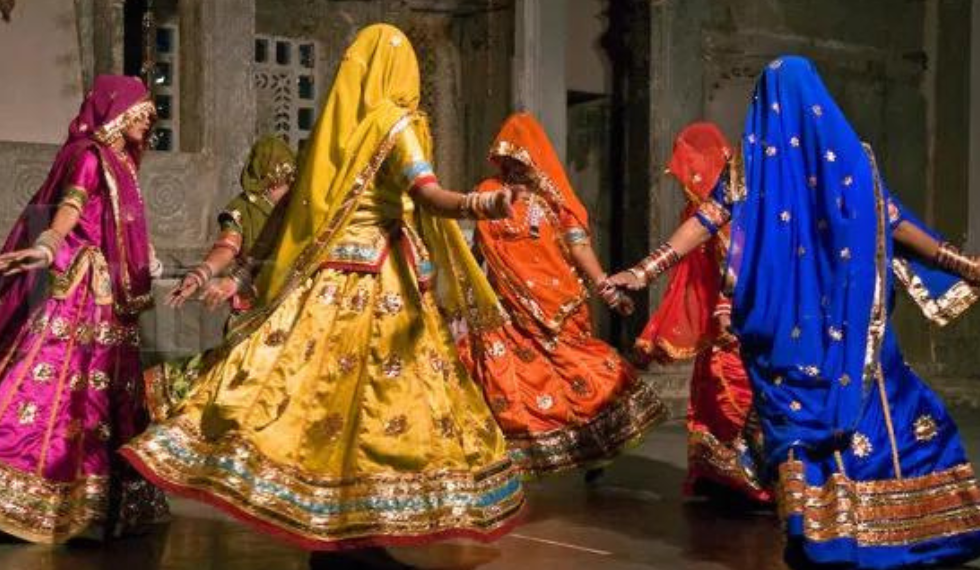
In 2022, a group of Ghoomar dancers from Mumbai’s slums graced the World Economic Forum in Davos, Switzerland, with their awe-inspiring performance. These women, survivors of violence and abuse, employed the graceful Ghoomar dance to spotlight the enduring challenges confronting women and girls worldwide. Their captivating and powerful display left the audience in Davos spellbound, sparking a standing ovation and resonating across the globe.
The Ghoomar dance, characterized by its fluid and intricate movements, embodied their resilience and unbreakable spirit. Beyond the dance’s mesmerizing elegance, it conveyed a message of hope and transformation. Their performance showcased the transformative power of traditional dance, proving it to be a beacon of strength and empowerment, particularly in the face of adversity.
This extraordinary event underscored the capacity of dance to be a universal language and a catalyst for change. It underscored the indomitable spirit of survivors and encouraged global support for women’s and girls’ rights. Ghoomar became a symbol of empowerment, reminding us that dance, in all its grace, can serve as a powerful tool for positive transformation.
Mira Bai: Dancing with Devotion – A Ghoomar Legend
Mira Bai, the mystical poet-saint of the 16th century, is not just a name in history; she’s a melody of devotion that resonates through the annals of time. Amidst the grandeur of Rajasthan’s royal courts, she emerged as a true embodiment of the divine, expressing her unwavering love for Lord Krishna through the exquisite art of Ghoomar.
Mira Bai’s Ghoomar performances were nothing short of enchanting. She danced with a grace and fervor that left onlookers spellbound. Each twirl, each sway of her colorful attire, and each gesture of her delicate hands seemed to transcend the physical realm, as if she were dancing in the presence of the divine himself.
The legend of Mira Bai’s devotion and her connection to Ghoomar is a heart-touching tale of a love so profound that it could only find expression through the most graceful of dance forms. Her dances were not mere performances; they were acts of devotion, a means to connect with the divine, and an expression of her unwavering faith.
In the world of traditional dance, Mira Bai stands as a timeless icon, a testament to the power of art in conveying the deepest emotions. Her story is a reminder that Ghoomar is not just a dance; it’s a language of the heart, a canvas for expressing love, devotion, and the profound connection between the human soul and the divine. Mira Bai’s legacy lives on through the Ghoomar dance, a reminder that the most beautiful stories are often told in the language of traditional dance.
Conclusion
In the heart of Rajasthan, the Ghoomar dance carries on its legacy of tradition, grace, and elegance. It’s not just a dance; it’s a living, breathing piece of Rajasthan’s cultural mosaic. As you watch Ghoomar dancers spin in their colorful skirts and veils, remember that this is more than just a performance; it’s a piece of history, a connection to the past, and a celebration of the present. For dancers, it’s an invitation to explore the fluidity and grandeur of this Rajasthani gem. For lovers of culture, it’s a window into the rich tapestry of Rajasthan. The Ghoomar dance is a testament to the enduring beauty of traditions, a reminder that in every spin and swirl, the essence of Rajasthan is gracefully preserved for generations to come.

